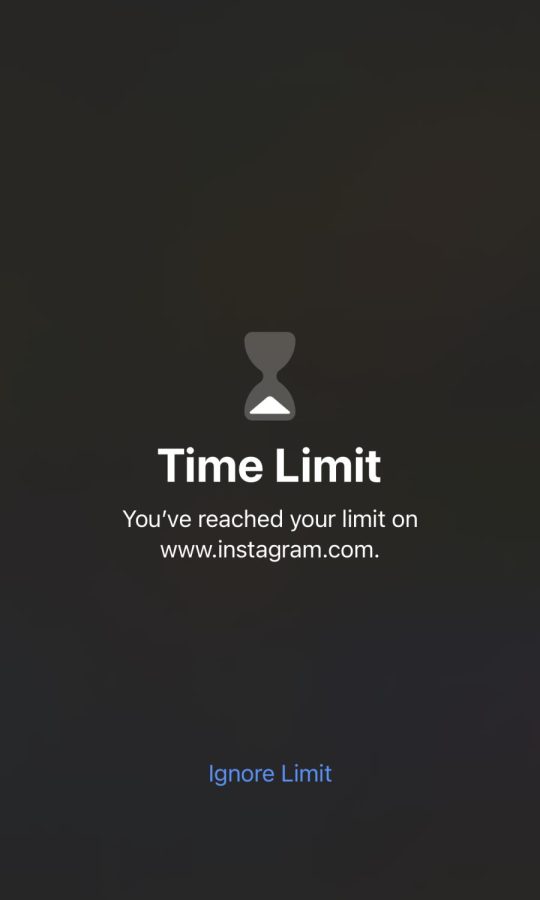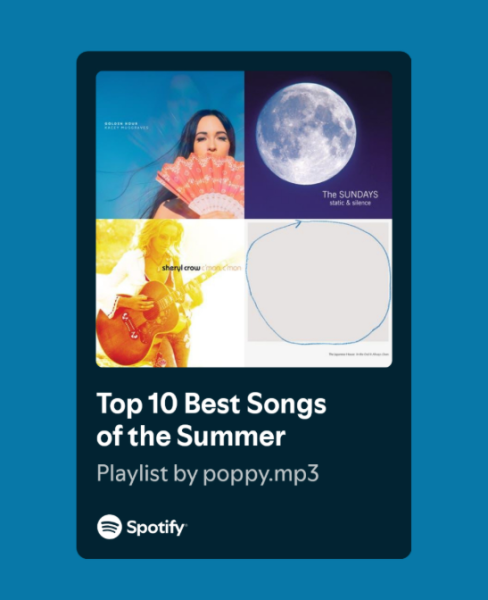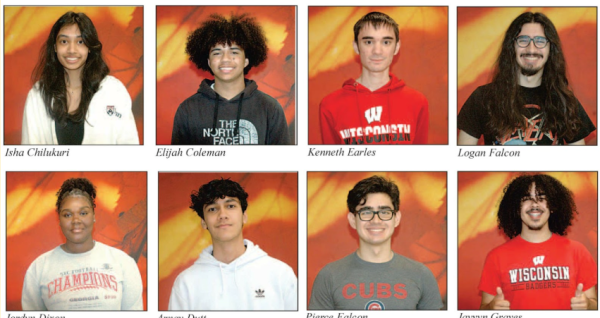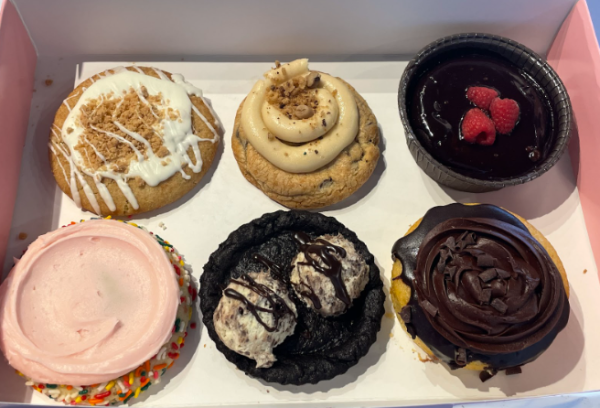I Gave Up Instagram For One Week. Here’s Why You Should, Too.
I had tried time limits before, to no avail. Research shows that reminders like time limits best reduce screen time when paired with other methods, such as a digital “time-out.”
How many people do you know that wish they spent more time on social media? If you’re anything like the majority of Americans, the answer to this question is none.
Yet according to the Washington Post, the average person with internet access spends two and a half hours each day on social media, and nearly four billion people are users worldwide. My stats fit right in with that – according to the screen time tracker on my phone, I averaged two hours and 32 minutes of screen time per day. Of that time, 120 minutes were on social media, with a whopping 90 spent on my most-used app.
I gave up Instagram for one week. Here’s why you should, too.
A little background: I’ve never felt like someone who uses my phone excessively. In a world of horror stories of friends who spend ten or more hours of time on their phones every single day, I felt pretty average. Despite this, I still felt the distracting effects of social media. I found myself procrastinating my homework every night, setting myself later and later deadlines to begin as I descended into the endless abyss of content. Anytime I had a spare moment, I felt compelled to pick up my phone and mindlessly scroll to alleviate boredom, or waiting time, or social discomfort. I almost began to feel like I spent so much time absorbing the thoughts and ideas of others that there wasn’t enough room for my own in my head. Social media, of course, could not possibly be the only cause of this, but I couldn’t help but wonder: what role did it play? It was time to truly explore the impact social media was having on my everyday life.
I’ve tried setting screen time limits on Instagram, even deleting it from my phone, but it always creeped back into my life. Screen time limits were easy to override, and it was never long before a post I heard about or a desire to follow a certain account made me reinstall the app. To do this, I set myself a challenge. One week, no Instagram. A laughably first-world challenge, granted, and one that I felt confident I could complete, but a goal that I felt would truly show the hold (if any) Instagram had on my life by showing me how I lived without it.
My challenge parameters:
1.) I could still access Instagram to message people. The gym I belong to uses Instagram chat to communicate information that I would continue to need access to.
2.) I would delete the Instagram app on my phone to delete the visual enticement from my home screen, activating Instagram chat through my search engine.
3.) I could not, under any other circumstances, interact with Instagram.
I chose the “digital timeout” approach because research shows the best way to handle social media addiction is to go cold turkey. When someone uses a social media site, neurons in their brain are excited and rewarded with a hit of dopamine. This is the same thing that happens when the human body eats food (or uses drugs), and it happens every single time a new post is viewed. Taking a timeout from the most engrossing apps resets the dopamine pathways in users’ brains, which become accustomed to the dopamine “hits” social media gives to them.
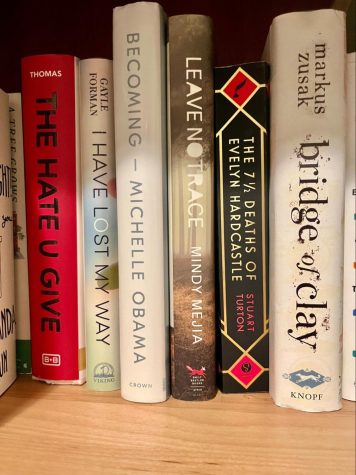
The first day of the challenge went smoothly. Anytime I felt the inclination to pick up my phone and scroll, I just changed course – picked up a book, went for a walk, took a shower. As the days stretched on, however, the desire to scroll grew. The problem was, social media had become my go-to when I was tired. When I got home from a long day of school and sports practice, my brain was too exhausted to think. Skimming Instagram was easy, it was mindless, and it was so engrossing that it quickly became my go-to over downtime activities I used to favor, such as reading, watching a movie, or just going to bed (perish the thought!). What I found, as the week wore on, is that I had more time for these things. I was able to finish two books and start a third. I found myself revisiting other old hobbies, as well – I drew for fun. I baked muffins. I had more time to spend with my parents and brother.
The biggest difference I noticed during this challenge, however, was in my study habits. This was the area that had been giving me fits since the year began. I would procrastinate for often more than two hours before cracking down on homework, spending the time mindlessly skimming the internet or doing anything that avoided the actual subjects I was meant to be learning. To be fair, I think this is a natural teenage reaction to a lot of school, especially when it comes to topics we aren’t particularly interested in (looking at you, math), but this was worse than usual. When I did finally start my assignments, I found it difficult to concentrate, my mind wandering after 10 or 15 minutes, rarely able to accomplish more than an hour of work in an evening. This week? That disappeared. I was in the zone. I was able to focus longer and more deeply on what I was working on, whether that was school-related or not. Movies became more interesting without the constant urge to check my phone.
These results are no surprise. Psychology Today reports that one of the main goals of software developers is to “break down [the user’s] self regulation,” meaning that the normal checks in the brain that tell people to move onto another task get muddled. The same approach keeps the user constantly thinking about checking back in for a new post, keeping a user from fully focusing on other tasks.
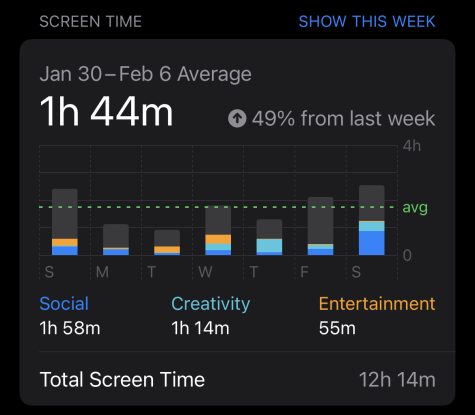
My challenge proved more effective than I anticipated. In the three weeks since its completion, I’ve averaged just 30 to 45 minutes on Instagram every day, about half of what I did before. More important than that, though, my brain feels refreshed. I feel just a little bit less distracted, a little bit more excited about the things I have going on in the real world. I’ve come to terms with a few things, though.
One: It’s impossible to entirely avoid social media. Even I had to keep Instagram in some capacity just for communication purposes. In an increasingly globally connected world, social media provides a link to broader culture and societal ideas.
Accepting that it’s here to stay, though, also helps us approach dealing with it. A blog from Stanford corroborates my results that a social media “timeout” is one of the best ways to reset dopamine pathways in the brain, allowing us to evaluate the positives and negatives of social media and its proper place in our lives. Once ready to return, we can return with a plan, such as only using at certain times of day, avoiding specific apps, or regular “timeouts.” My challenge helped me to realize the amount of time and energy social media was sucking from my life. Conscious use of social media like this can help you to avoid falling into the potential trap of endless scrolling and missing out on real-life experiences and connections.



